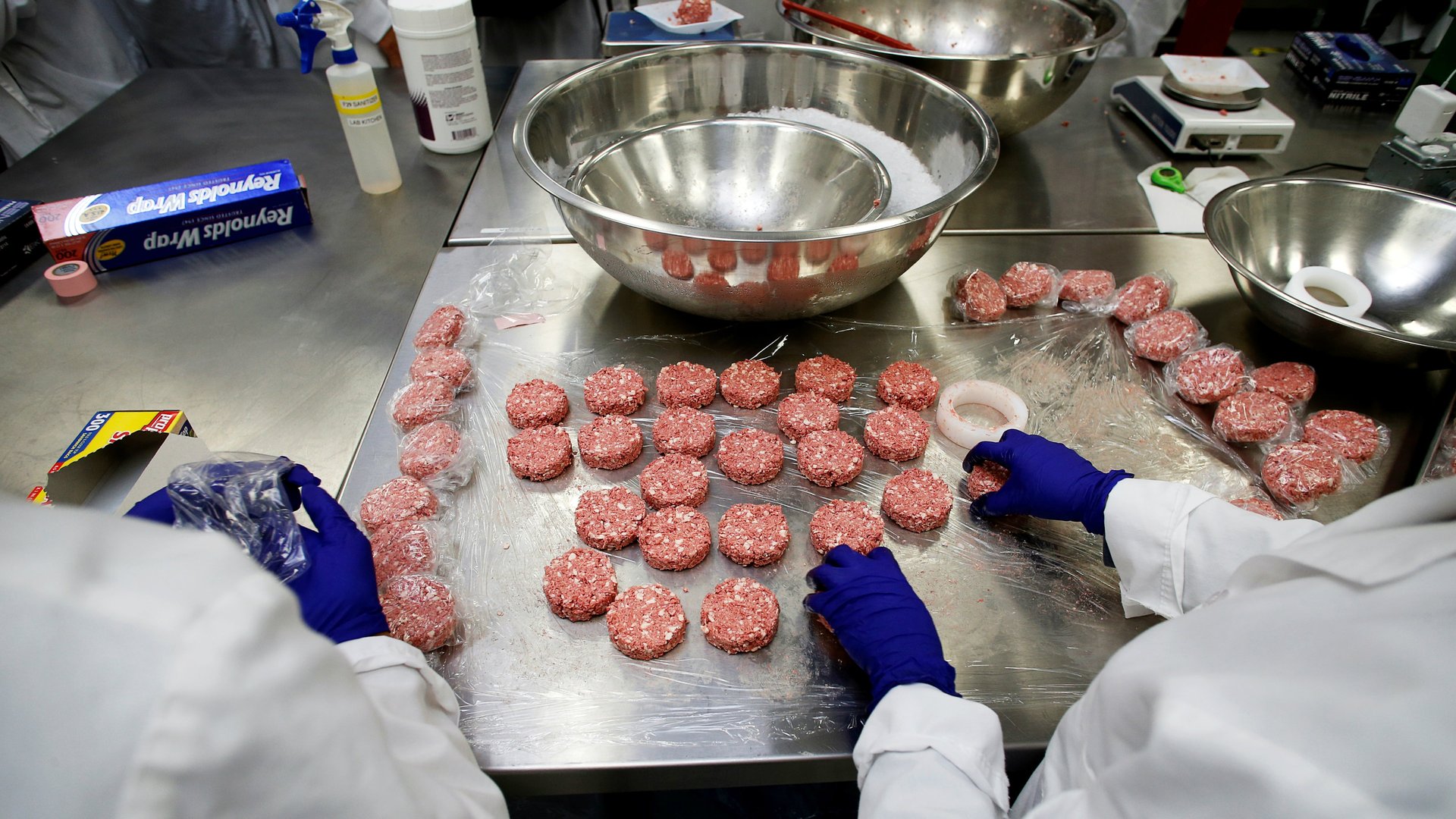A battle royale between vegan burger brands is about to unleash in supermarkets
There will be fake blood. Pending US Food and Drug Administration (FDA) approval, that is.


There will be fake blood. Pending US Food and Drug Administration (FDA) approval, that is.
A nod from the FDA (subscription) is the only thing standing in the way of Silicon Valley-based Impossible Foods rolling out its high-tech faux burger in American grocery stores. The Impossible Burger is already being sold in more than 5,000 US restaurants. Its main ingredient, soy leghemoglobin, or “heme,” is what gives the burger its flavor and pink, meat-like appearance.
And therein is the issue. That pinkish heme needs to be formally approved as a color additive before it can be purchased and handled by individual consumers. Impossible Foods filed a petition to the agency in November to have heme approved as a color additive. The FDA can take at least 90 days to respond.
As detailed by Bloomberg, one of the reasons Impossible Foods is facing such a high degree of scrutiny from the FDA over a color additive stems way back to 1960. That’s when the US Congress revamped the 1938 Federal Food, Drug, and Cosmetic Act to respond to a spate of food poisoning cases amongst kids as a result of candy companies using toxic orange dyes in their products. Since then the government has been extra watchful of color additives.
This isn’t the first time Impossible Foods has run into a heme-related issue at the FDA. In July, after a long and public process, the agency approved the use of soy leghemoglobin, in general. Regulators at the FDA had been concerned because the soy-based ingredient had never been consumed by humans.
Once (and if) it is approved, the competition between America’s two preeminent plant-based meat companies is going to heat up.
From their inception, Impossible Foods and Los Angeles-based Beyond Meat chose two different initial pathways to market. Beyond Meat sought to get into retail stores first, introducing its plant-based product into supermarkets into 2016—first in the speciality foods aisle, before moving to the meat aisle last year. Impossible Foods chose to go into restaurants—including in fast-food chains such as White Castle. Now the two are about to go head-to-head in the ultimate market, one in which everyday grocery shoppers rolling by the meat aisle will be able to choose between the two non-meat options.
So far, Beyond Meat has proven there is an appetite among consumers for new plant-based meat alternatives. The company is in 30,000 retail locations nationwide, including Walmart, Target, Whole Foods, Kroger, and Publix, and has seen 70% annual growth in supermarket sales since its launch. Now that Beyond Meat will have a true competitor in the marketplace, the real test—the collision of taste, texture, and price point—begins.